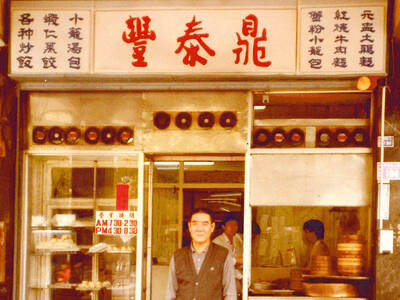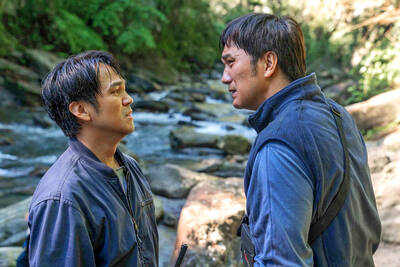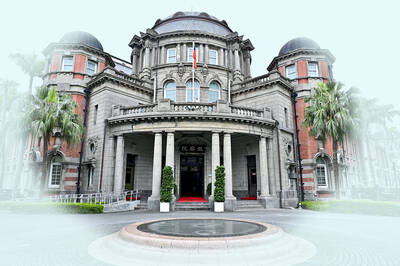Shih Shu-ching (施叔青), one of Taiwan’s most celebrated authors, lived in Hong Kong for 15 years, spending eight of them researching and writing City of the Queen, her trilogy about the former British colony. It was published in Chinese in 1993, 1995 and 1997. This English rendition, by the celebrated husband-and-wife translating team Howard Goldblatt and Sylvia Li-chun Lin, is an abbreviated version, reducing the original to one volume.
The novel tells the story of a 13-year-old girl from China, Huang Deyun (黃得云), who in 1892 is kidnapped and taken to Hong Kong to work as a prostitute. She quickly moves on, however, and ends up as a rich landowner. Fifty years of Hong Kong’s history are surveyed in the process, plus another fifty, via what in this version are rather brief tales of Huang’s descendants, to the territory’s handover to Beijing in 1997.
The first thing to be said about this translation is that the historical detail is a lot more interesting than the story itself. Not only is the varied cavalcade presented with great vividness, but in addition the reader learns a lot about Hong Kong’s social history. Opium, gold and plague all feature prominently in the early chapters and, as if that wasn’t enough, you also learn a lot about the kind of brothels that existed and how they were furnished.
This book, then, is both popular in tone and well-informed. But there are some apparent errors. That snow covers Hong Kong’s Mount Taiping (Victoria Peak) “every winter” is certainly not the case. The British would have played snooker, not “pool,” and the Anglican cathedral of St John’s wouldn’t say “mass.” “Mid-Levels,” describing the residential area half-way up Hong Kong Island, is always used in the plural, not in the singular as here. And it’s untrue that HSBC (“Wayfoong Bank,” 匯豐銀行) had the exclusive right to issue Hong Kong’s banknotes — they were also issued by the Standard Chartered Bank.
Shih is subtle in her analysis of relations between the Chinese and the British. Each group took for granted the worst alleged attributes of the other. The richest and the poorest members of the population were Chinese, but the British kept a tight hold on power until comparatively late in their administration, and for this and other reasons (notably inequality of pay for the same or similar work) they held on to their dominant social position.
There’s an enormous amount of period detail. You learn that the Chinese rang bells to scare away demons in times of plague, that there was a 10pm curfew at a certain period, that Sikhs were regularly used as security guards, that prisoners were beaten in Victoria Prison in Central, and that termites were a routine problem, as were water shortages.
You’re treated to depictions of Queen Victoria’s Diamond Jubilee in 1897 and the acquisition of the New Territories in 1898, when the British used armed force to disperse protesting villagers. There are descriptions of the widespread disbelief that followed Darwin’s theory of evolution, of the strikes of 1922, and of the Japanese occupation during World War II. It’s also asserted that during Hong Kong’s early days the most powerful voice in the colony was that of “the opium-dealer Jardine,” followed by the Jockey Club, and only then by the governor.
There’s a fascinating paragraph on ice — cut in blocks from North American rivers and lakes, then covered in sawdust and chaff to prevent it from melting, and transported to Asia in sailing ships. You also read about the firm Dent and Co, one of whose operations was transporting impoverished Chinese to be sold as laborers in South America, with sometimes as many deaths during the passage as in the better-known slave trade.
One of the reasons it’s such a pity that we only have this abbreviated translation of City of the Queen is that the novel inevitably invites comparison with The Song of Everlasting Sorrow (長恨歌) by Wang Anyi (王安憶) [reviewed in Taipei Times on Aug. 31, 2008]. That book also looked at the history of one modern Chinese city, Shanghai, via the life of one of its female inhabitants and her lovers. I’ve only read this shortened version of City of the Queen, but I have to say that The Song of Everlasting Sorrow appears to
be undoubtedly the finer book. But then its aims, though superficially similar, are actually different. Wang’s novel is like Proust — atmospheric, sophisticated, implicitly claiming the status of literature. Shih’s, by contrast, is like Zola — realistic, shocking, well-researched and aspiring to a kind of higher journalism. There’s no question of influence in either direction as Wang’s book was published in Chinese in 1995, at roughly the same time as Shih’s trilogy.
The problem with this shortened English edition is that the narrative falls off badly towards the end, becoming a series of largely inconsequential moments. Goldblatt and Lin note that originally Shih’s third volume was narrated in the first person, but that this was changed, presumably to give the one-volume reduction a degree of uniformity. But was this really necessary?
The translators, possibly aware that they may be open to criticism, also pointedly state that Shih approved “both the editing and the translation.” Even so, doubts remain. Was the balance between historical detail and fictional narrative the same, for instance, in the three-volume original as it is here, where history appears to overweigh the story line at several points?
City of the Queen now deserves a full-length translation, especially in the light of the translators’ assertion that to their knowledge this novel is the only one in existence that surveys the last 100 years of Hong Kong’s history from a Hong Kong resident’s perspective.

March 24 to March 30 When Yang Bing-yi (楊秉彝) needed a name for his new cooking oil shop in 1958, he first thought of honoring his previous employer, Heng Tai Fung (恆泰豐). The owner, Wang Yi-fu (王伊夫), had taken care of him over the previous 10 years, shortly after the native of Shanxi Province arrived in Taiwan in 1948 as a penniless 21 year old. His oil supplier was called Din Mei (鼎美), so he simply combined the names. Over the next decade, Yang and his wife Lai Pen-mei (賴盆妹) built up a booming business delivering oil to shops and

Indigenous Truku doctor Yuci (Bokeh Kosang), who resents his father for forcing him to learn their traditional way of life, clashes head to head in this film with his younger brother Siring (Umin Boya), who just wants to live off the land like his ancestors did. Hunter Brothers (獵人兄弟) opens with Yuci as the man of the hour as the village celebrates him getting into medical school, but then his father (Nolay Piho) wakes the brothers up in the middle of the night to go hunting. Siring is eager, but Yuci isn’t. Their mother (Ibix Buyang) begs her husband to let

The Taipei Times last week reported that the Control Yuan said it had been “left with no choice” but to ask the Constitutional Court to rule on the constitutionality of the central government budget, which left it without a budget. Lost in the outrage over the cuts to defense and to the Constitutional Court were the cuts to the Control Yuan, whose operating budget was slashed by 96 percent. It is unable even to pay its utility bills, and in the press conference it convened on the issue, said that its department directors were paying out of pocket for gasoline

For the past century, Changhua has existed in Taichung’s shadow. These days, Changhua City has a population of 223,000, compared to well over two million for the urban core of Taichung. For most of the 1684-1895 period, when Taiwan belonged to the Qing Empire, the position was reversed. Changhua County covered much of what’s now Taichung and even part of modern-day Miaoli County. This prominence is why the county seat has one of Taiwan’s most impressive Confucius temples (founded in 1726) and appeals strongly to history enthusiasts. This article looks at a trio of shrines in Changhua City that few sightseers visit.